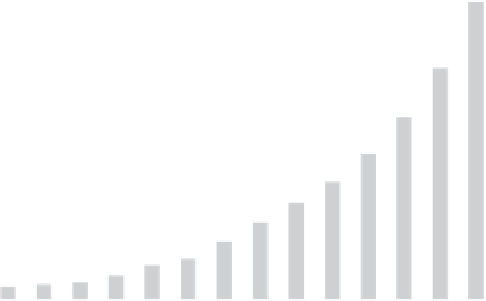Environmental Engineering Reference
In-Depth Information
35,000
140,000
Cumulative capacity
Annual capacity additions
30,000
120,000
25,000
100,000
80,000
20,000
60,000
15,000
40,000
10,000
20,000
5,000
0
Cumulative Capacity
Annual Capacity Additions
0
1995
1996
1997
1998
1999
2000
2001
2002
2003
2004
2005
2006
2007
2008
4,800
1,290
6,100
1,280
7,600
1,530
10,200
2,520
13,600
3,440
17,400
3,760
23,900
6,500
31,100
7,270
39,431
8,133
47,620
8,207
59,091
11,769
74,133
15,042
93,823
19,690
120,791
27056
FIGURE 5.1
Global wind capacity, 1995 to 2008. (Global Wind Energy Council, Brussels, 2009.).
Recent studies show that bulk storage can reduce the integration costs for
wind energy even at relatively low penetration levels [24]. The use of storage
for balancing wind and serving other grid management applications will
be especially valuable where the supply of flexible generating capacity (e.g.,
hydroelectric) is limited [18,25]. The continued increase of wind penetration
on the grid and the need to reduce GHG emissions may create an incen-
tive to use storage systems directly coupled with wind to produce basel-
oad power rather than as independent entities to provide grid support (see
below). Further, because the fuel consumption of CAES is less than half that
of a simple cycle gas turbine, it provide a hedge against natural gas price
volatility [26].
A further reason for considering wind farms coupled to CAES storage (wind/
CAES) stems from the fact that most high quality onshore wind resources
are often remote from load centers. The exploitable onshore wind potential
in classes 4 and above in North America is huge—more than 12 times total
electricity generation in 2004 [27,28]. However, wind resources in the United
States are concentrated in the sparsely populated Great Plains and Midwest
states that account for over half of the exploitable wind generation poten-
tial in class 4+ [29]. Bringing cost-effective electricity from the Great Plains
to major urban electricity demand centers requires that it be transmitted via
baseloaded GW-scale high-voltage transmission lines. CAES systems coupled
to multiGW-scale wind farms could provide such baseload power.
Because the incremental capital cost for increasing CAES storage volume
capacity is relatively low, CAES is well suited for providing long-duration
storage (>80 hours) needed to produce baseload power. Although seasonal






